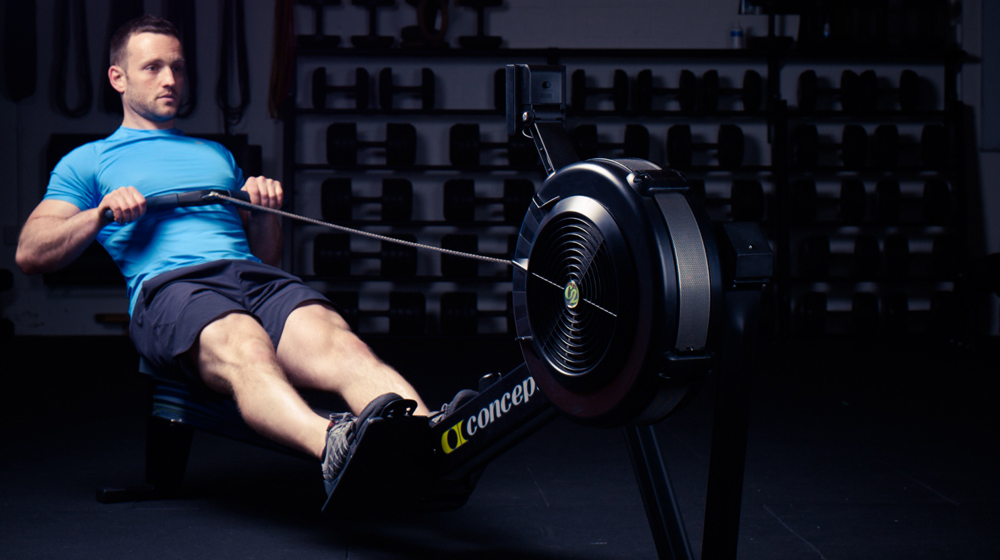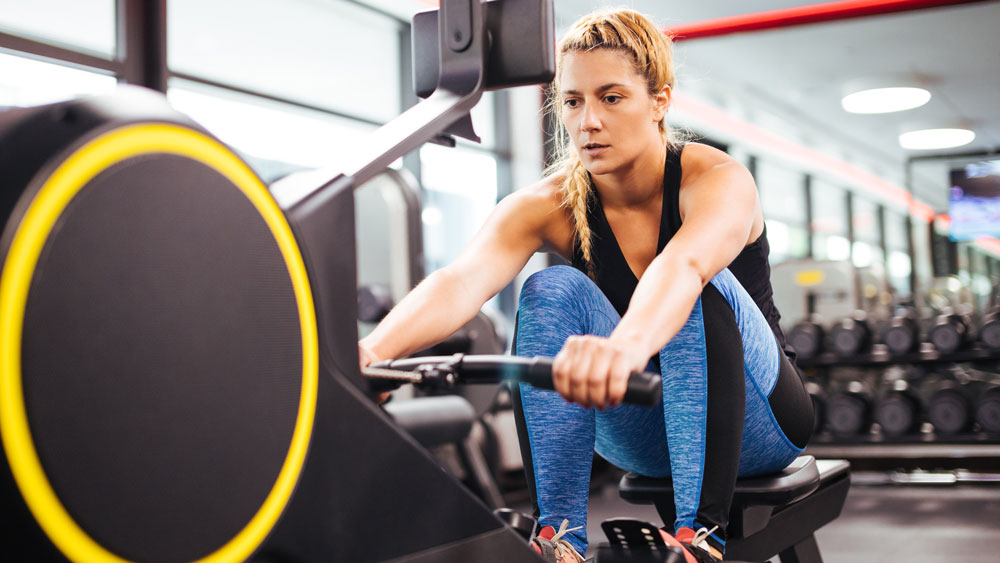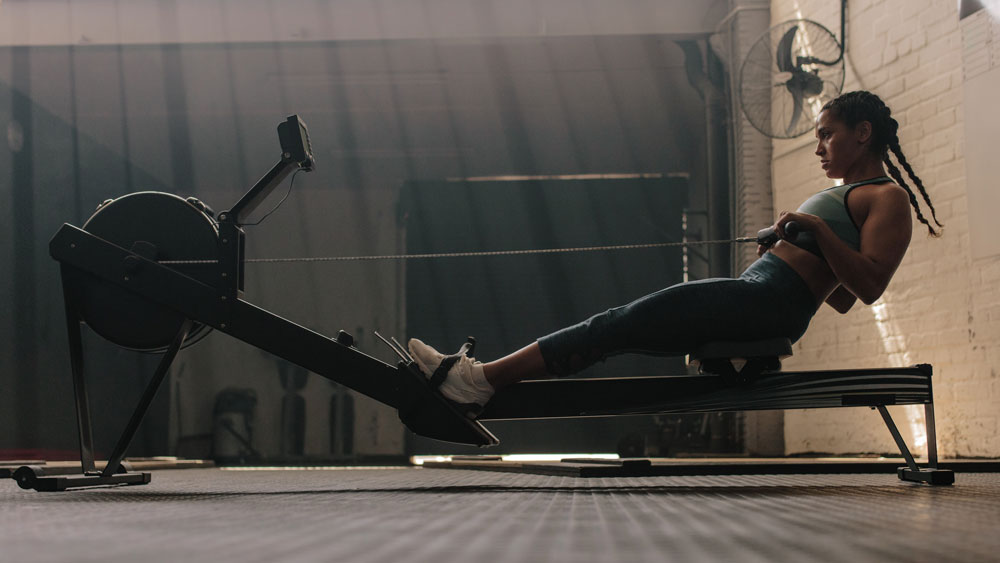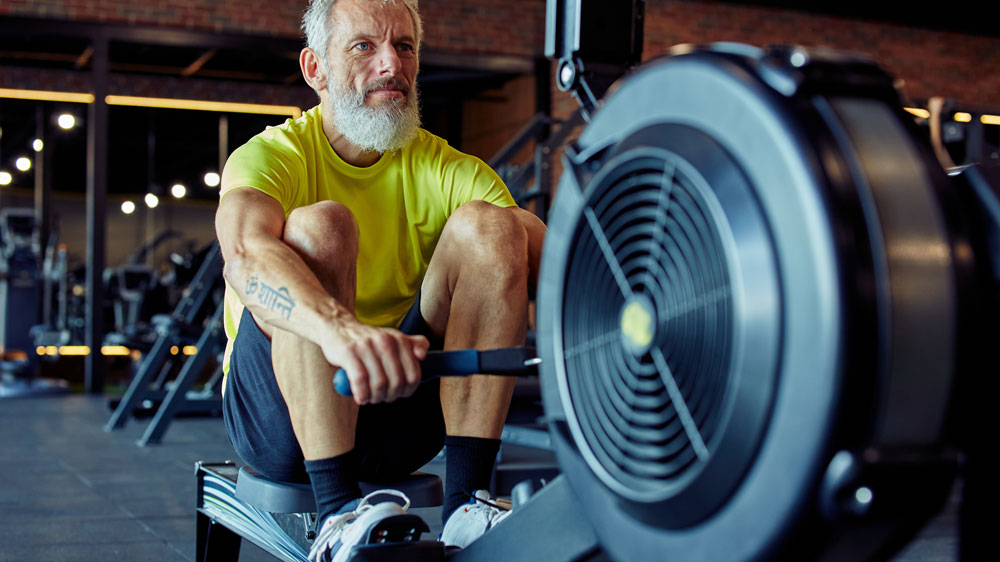Rowing Machine Workouts For Fat Loss, Plus Building Muscle, Speed And Endurance
Stop ignoring the rowing machine

Each of the cardio machines found in gyms offers its own benefits, and you can get a great workout on any of them, whether you prefer the treadmill, exercise bike, cross-trainer or rowing machine. We do have a particular soft spot for the rower, however, simply because of the all-round fitness benefits it offers.
Unlike the exercise bike or the treadmill, the rowing machine hits muscles in both your upper and lower body, and unlike the elliptical it’s also a brilliant machine to use when pushing yourself through high-intensity efforts, simply because it’s harder to take it easy on a rower than a treadmill or bike.
Below you’ll find more information about the benefits of the rower to your strength and cardiovascular fitness, along with tips on how to perfect your stroke so you’re getting the most from every workout you do on it. Then it’s on to the workouts themselves. We have put together a range of sessions designed to help you hit different fitness goals using the rower, along with some great all-out workouts you can try on the machine. Get ready to sweat.
Rowing Machine Benefits

For a powerful, low-impact full-body workout that can both build strength and develop cardiovascular fitness, there’s no better machine than the rower. Far from just targeting your arms (a popular misconception), the rowing machine works your legs (quads, gastrocnemius, soleus and hamstrings), your glutes, back (lats, traps and rhomboids) and your core. Small wonder you feel tired afterwards.
According to Pelé Zachariah, head trainer at fitness studio ROWBOTS, the rower can provide more benefits than other pieces of gym equipment.
“The rowing machine is the piece of equipment in the gym that gives you the biggest bang for your buck by far,” says Zachariah. “One of my favourite things about the rowing machine is that it does not matter how fit or strong you are—it will push your mind and body to its absolute limits.”
One of the great things about the rower is its flexibility. It offers an endless variety of workouts, so you can adapt your session to your goals, whether that’s building strength, burning fat or maximising your cardiovascular fitness.
Sign up for workout ideas, training advice, reviews of the latest gear and more.
Tom Eastham, a strength and nutrition coach, believes that the best way to get fitter and healthier is to work on your weaknesses—which for most people means more time on the rower once you’ve mastered the correct form.
“There’s tremendous cross-over benefits to other activities,” Eastham says. “To get better at weightlifting, for instance, you need good triple extension of the ankle, knee and hip joints, which you’ll work on with every single stroke of the rower. It can also make a huge improvement to your aerobic fitness to build endurance, and your anaerobic fitness for more speed. And because up to 85% of your muscles are involved when rowing, you can also build muscle size, strength and power.”
But Eastham’s favourite thing about the rower is the performance feedback you get with every stroke. “The machine’s display details all the information you need to ensure that your planned session is right on track, so you know that you’re always moving closer to your fitness objective,” he says.
Zachariah recommends isolating your fitness goals and finding the right workout to suit them. “If your aim is to build a strong aerobic base, then you should be rowing for longer while aiming to keep your strokes per minute (SPM) between 18 and 24. If your goal is to build serious power in the legs, try an interval session focusing on ten strokes at maximum watts, followed by 60 seconds of active recovery.”
Below are some of Eastham and Zachariah’s favourite rowing sessions to help you achieve various fitness goals, but first here’s how to use the rowing machine correctly.
Rowing Machine Form
“Before you start any session you need to know how to use the rower correctly and safely so that every stroke is effective,” says Eastham. “So many of us spend all day sitting down—on the way to and from work, and hunched over a desk when we are there—which causes tight hamstrings, rounded shoulders and switched-off glutes. That’s a bad start. Work on your posture, and correct any muscular imbalances and weakness, and you’ll be ready to row.”
Make sure the machine is set up right for you. If the monitor can be adjusted, make sure it’s at head height so you’re not straining your neck to see it. If there’s a damper or dial to adjust resistance, set it at a low to medium setting (between 3 and 5 on a Concept2 RowErg) unless the workout you’re planning suggests otherwise. Make sure your feet are firmly secured with the strap across the widest part of your foot.
The stroke

Each stroke is divided into two parts: the drive and the recovery. The drive is the work portion of the stroke, while the recovery is the “rest” portion of the stroke where you prepare for the next drive.
Start the drive by pushing your feet down to straighten your legs, keeping your arms and back straight and your shoulders in front of your hips (the equivalent of about one o’clock on a clock face).
When your legs are almost fully straight, swing your body back to 11 o’clock, then drive your elbows back to bring the handle powerfully towards your chest (your hands should reach your sternum—around the height of a heart rate monitor or bra strap).
At the end of the drive your torso should be leaning back slightly with your elbows behind your body.
The recovery portion begins as you reverse the movement to the start. First extend your arms, then rock your body over to the one o’clock position, bend your knees and slide the seat back towards your heels.
It can be helpful to repeat the following cues in your head: legs-body-arms (for the drive) and then arms-body-legs (for the recovery).
Common mistakes in the drive include opening up your body before straightening your legs. This puts strain on your lower back and can lead to injury.
On the recovery, the most common error is to bend your knees first. You’ll know you’re doing this if you have to raise your hands to get them over your knees. Keep those cues in mind—arms-body-legs—and you should see a difference.
Rowing Machine Workouts
The Fat Burner
“Make sure you’ve warmed up and then go flat-out for 30 seconds followed by a 30-second rest,” says Zachariah. “Repeat this ten times, followed by a two-minute rest. After this rest, repeat another ten sets. This session will have you breathing deep and sweating buckets, and will help towards shedding those extra pounds! Try to cover roughly the same distance in every single 30-second effort.”
Eastham recommends a similar session. “Warm up with an easy-pace five-minute row. Row as hard as you can for 30 seconds, then rest for 30 seconds. Repeat this for a total of six rounds, then take a three-minute rest. That’s one set. Do a total of three sets. The aim is to maintain the same intensity—so you row roughly the same distance—every time. If you don’t need the full three minutes of rest you weren’t going hard enough.”
These sessions are all about maximum effort. Aim for about 30SPM (so long as your technique doesn’t fall apart) and if you’re serious about blasting fat, don’t leave anything in the tank!
The Power Factory – 500m Row Repeats
Row repeats are a brilliant way to develop your explosive power as well as your mental strength. They should help in developing your 2K time, too (see below).
“Spend 10 minutes warming up, then row for 500m at a reasonably tough effort level, followed by a 60-second rest,” says Zachariah. “Repeat this ten times. The aim of this workout is to keep the time roughly the same in each 500m effort.”
Eastham recommends a variation on this, replacing 500m with 250m. You’ll still get a powerful workout if you really push yourself in the sprints: because there’s a full minute to recover, you can go all out and not worry about pacing yourself.
These intervals are designed to be challenging, and it may take you a couple of attempts to figure out the right pace so that you don’t burn out too soon. Aim for around 28SPM.
The Engine Builder
“If you’re looking to build a serious aerobic engine, you need to get comfortable with the longer stuff,” says Zachariah. “Spend 40 to 60 minutes rowing at a tough intensity that you can maintain for the whole period. This is a great way to work on your pacing, and it also requires a great deal of mental strength to stay consistent and focused!”
It can be helpful to work with a heart rate monitor for this kind of steady state session. If you know your UT2 zone (approximately 60%-75% of your maximum heart rate), staying within it is great for building stamina even if it doesn’t feel terribly hard at the time.
For this kind of session, keep your stroke rate lower than you might be accustomed to—around 18-20SPM—and concentrate on your technique. It’s a great idea to break it up into five- or 10-minute chunks with a different technical focus for each one.

Time Trial – 2,000m
In indoor rowing competitions, the main event is the 2K distance and it’s a useful way to rank yourself against other rowers.
“The 2K time trial for a rower is the equivalent of the weightlifter’s one-rep max,” says Zachariah. “Make sure that you have spent 10 minutes warming up, followed by a 60-second recovery period to have a drink and catch your breath. You are then going to row for 2,000m as quick as you possibly can!
“Top tip: the first 500m should feel easy, and if it doesn’t, you’ve gone out too hard! Remember to record your time and then row it every six weeks to measure your progress.”
To improve, or work up to the distance, Eastham suggests doing 4 x 500m with one minute of rest in between. “This helps you get used to covering the distance as quickly as you can,” says Eastham, “and as you progress, reduce the duration of your rest in five- or 10-second drops to push yourself closer towards doing 2K in one all-out effort.”
The Cardio Challenge
Don’t neglect the middle distance, which is great for building your aerobic endurance base. After a five-minute warm-up, do two 20-minute intervals with a five-minute rest in between.
The intensity should lie somewhere in between the Endurance Builder and the short Fat Burner intervals. Aim for a lively 24SPM (there’s no need to go higher) and make sure you’re working in the UT1 zone (approximately 75%-80% of your maximum heart rate), so you’d struggle to talk as you row. Aim to cover a similar distance in both sets.
21/15/9 Rowing/Burpee Workout
Combining sprints on the rowing machine with circuit-style mat work is an amazing way to torch fat and make your workout more interesting.
“This WOD (workout of the day) is a serious test of how far you can push your body and mind,” says Zachariah. “Make sure you’ve spent some time getting warmed up. You start by burning 21 calories on the rowing machine as quickly as possible. You then jump to the floor and do 21 chest-to-floor burpees. As soon as you’ve finished those burpees, jump back on the rower and do 15 calories, followed by 15 burpees. To finish off, complete nine calories on the rower followed by nine burpees. This one gets very hard very quickly, so challenge yourself to dig deep and make it to that final repetition!”
To mix things up, you could replace the burpees with jump squats, mountain climbers or squat thrusts—anything that keeps your heart rate high and challenges your muscles. You could add some dumbbell exercises for a bit of resistance training.
More Rowing Machine Workouts

Nick Harris-Fry is a journalist who has been covering health and fitness since 2015. Nick is an avid runner, covering 70-110km a week, which gives him ample opportunity to test a wide range of running shoes and running gear. He is also the chief tester for fitness trackers and running watches, treadmills and exercise bikes, and workout headphones.
- Patricia Carswell
- Joe WarnerFormer editor of Men’s Fitness UK
